
How to Use LCD 16x2 attached i2c: Examples, Pinouts, and Specs
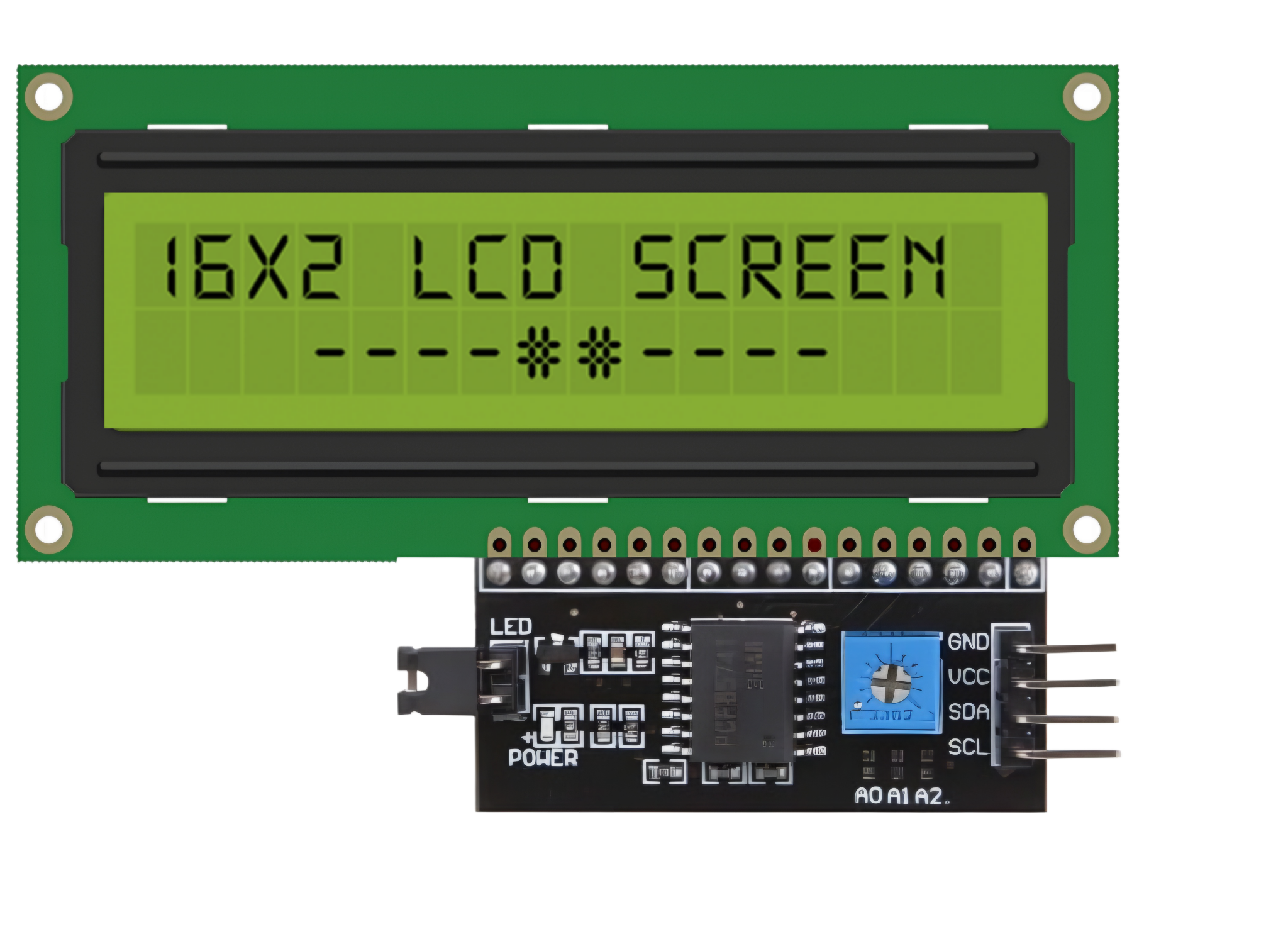
 Design with LCD 16x2 attached i2c in Cirkit Designer
Design with LCD 16x2 attached i2c in Cirkit DesignerIntroduction
The LCD 16x2 with I2C interface is a versatile and widely used display module capable of showing 16 characters per line across 2 lines. It is equipped with an I2C (Inter-Integrated Circuit) interface, which simplifies communication with microcontrollers by reducing the number of required pins. This makes it an excellent choice for projects where pin availability is limited or where simplicity is desired.
Explore Projects Built with LCD 16x2 attached i2c
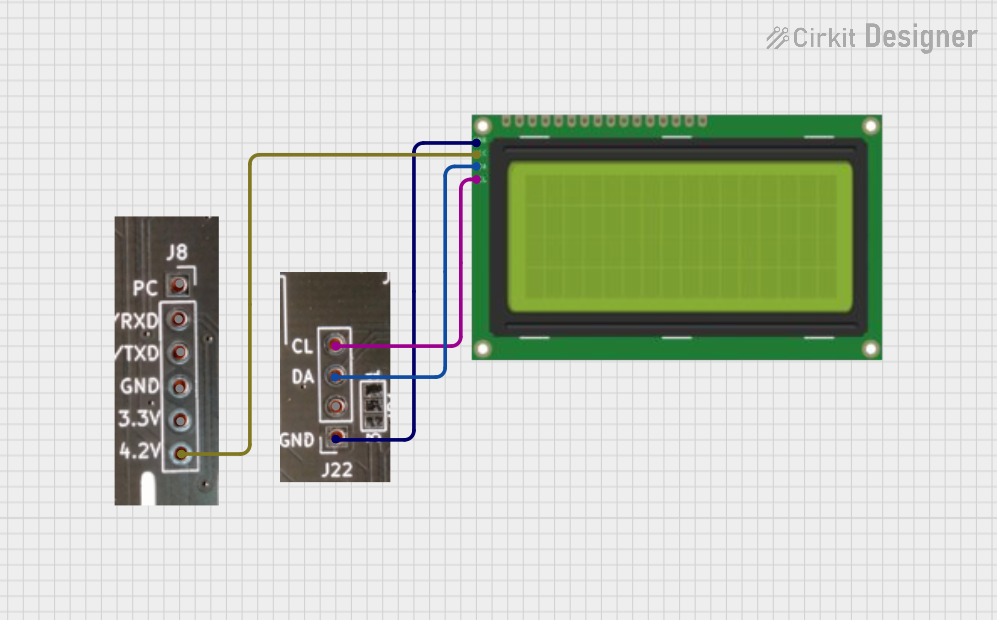
 Open Project in Cirkit Designer
Open Project in Cirkit Designer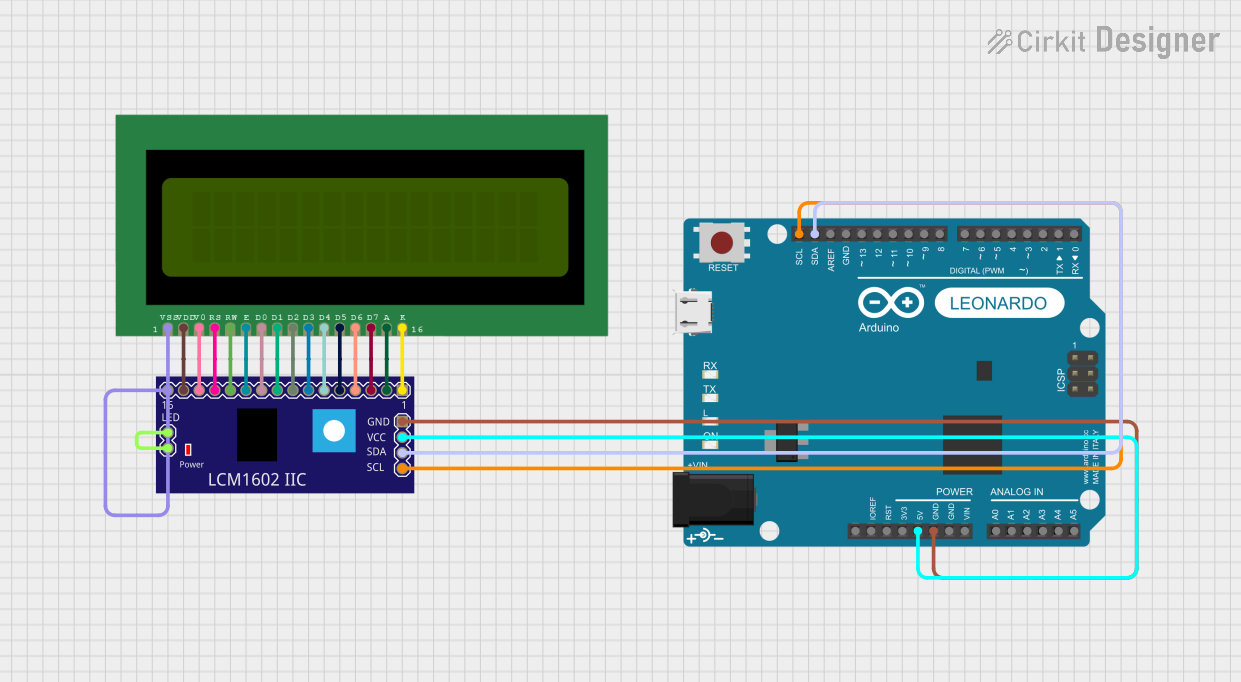
 Open Project in Cirkit Designer
Open Project in Cirkit Designer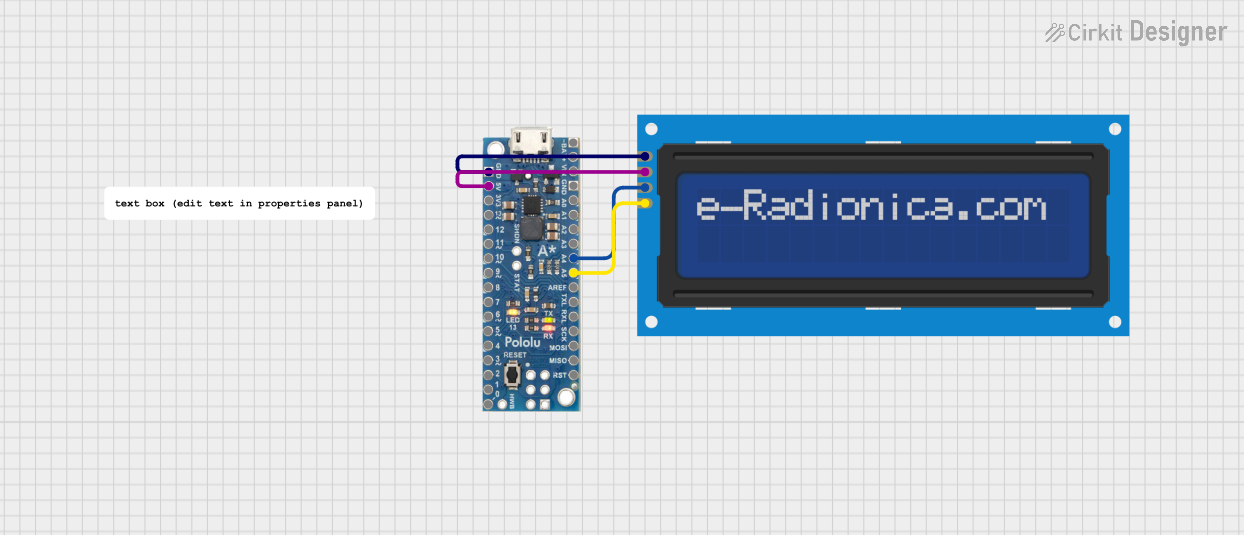
 Open Project in Cirkit Designer
Open Project in Cirkit Designer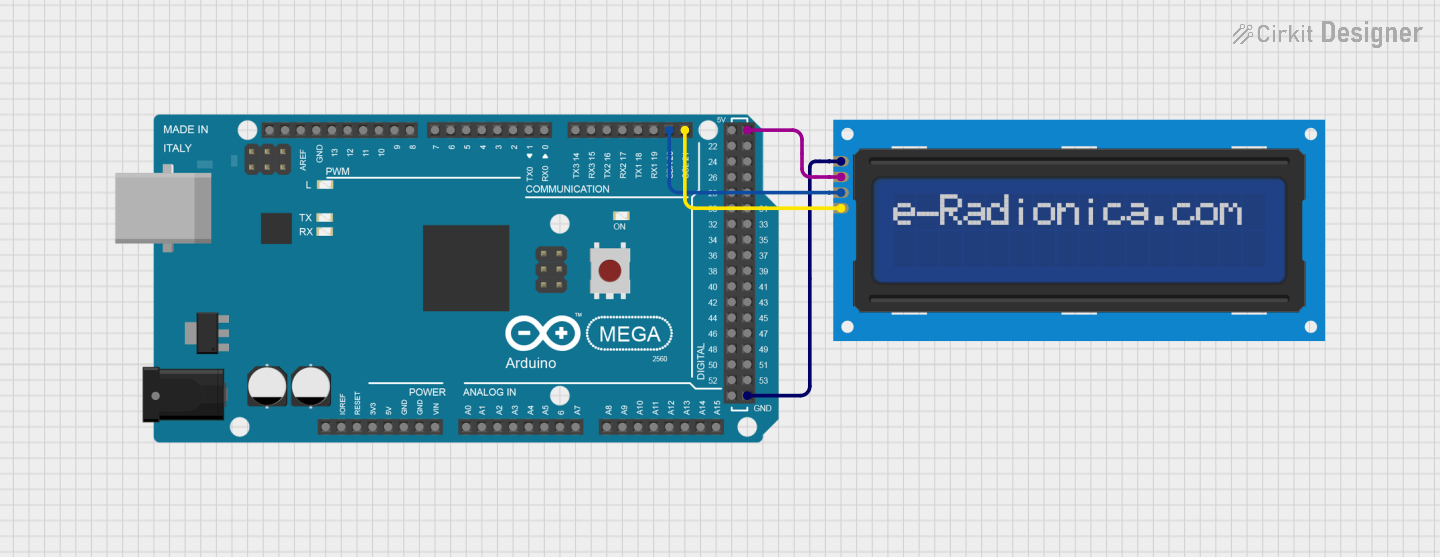
 Open Project in Cirkit Designer
Open Project in Cirkit DesignerExplore Projects Built with LCD 16x2 attached i2c

 Open Project in Cirkit Designer
Open Project in Cirkit Designer
 Open Project in Cirkit Designer
Open Project in Cirkit Designer
 Open Project in Cirkit Designer
Open Project in Cirkit Designer
 Open Project in Cirkit Designer
Open Project in Cirkit DesignerCommon Applications and Use Cases
- Displaying sensor data in real-time
- User interfaces for embedded systems
- Menu systems for microcontroller-based projects
- Educational and prototyping purposes
- IoT devices requiring visual feedback
Technical Specifications
Key Technical Details
- Display Type: 16x2 character LCD
- Interface: I2C (uses PCF8574 I/O expander)
- Operating Voltage: 5V DC
- Backlight: LED backlight (controllable via software)
- I2C Address: Typically 0x27 or 0x3F (configurable via jumpers)
- Current Consumption: ~20mA (with backlight on)
- Character Size: 5x8 dot matrix per character
- Operating Temperature: -20°C to +70°C
Pin Configuration and Descriptions
The I2C interface reduces the number of pins required to just four. Below is the pin configuration:
| Pin Name | Description |
|---|---|
| VCC | Power supply (5V DC) |
| GND | Ground |
| SDA | Serial Data Line (I2C data) |
| SCL | Serial Clock Line (I2C clock) |
Usage Instructions
How to Use the Component in a Circuit
Wiring the LCD 16x2 with I2C:
- Connect the VCC pin to the 5V pin of your microcontroller.
- Connect the GND pin to the ground (GND) of your microcontroller.
- Connect the SDA pin to the I2C data line (e.g., A4 on Arduino UNO).
- Connect the SCL pin to the I2C clock line (e.g., A5 on Arduino UNO).
Install Required Libraries:
- Use the Arduino IDE and install the
LiquidCrystal_I2Clibrary. To do this:- Go to Sketch > Include Library > Manage Libraries.
- Search for
LiquidCrystal_I2Cand install the library by Frank de Brabander.
- Use the Arduino IDE and install the
Basic Arduino Code Example: Below is an example code to display "Hello, World!" on the LCD:
// Include the LiquidCrystal_I2C library #include <Wire.h> #include <LiquidCrystal_I2C.h> // Initialize the LCD with I2C address 0x27 and 16x2 dimensions LiquidCrystal_I2C lcd(0x27, 16, 2); void setup() { lcd.begin(); // Initialize the LCD lcd.backlight(); // Turn on the backlight lcd.setCursor(0, 0); // Set cursor to the first column, first row lcd.print("Hello, World!"); // Print text on the LCD } void loop() { // No actions in the loop for this example }
Important Considerations and Best Practices
- I2C Address: Ensure the correct I2C address is used in your code. If the LCD does not respond, use an I2C scanner sketch to determine the address.
- Power Supply: Use a stable 5V power source to avoid flickering or malfunctioning of the display.
- Contrast Adjustment: The I2C module typically includes a potentiometer to adjust the contrast. Turn the potentiometer to achieve optimal visibility.
- Backlight Control: Use the
lcd.backlight()andlcd.noBacklight()functions to control the backlight programmatically.
Troubleshooting and FAQs
Common Issues and Solutions
LCD Not Displaying Anything:
- Verify the wiring connections, especially SDA and SCL.
- Check the I2C address in the code. Use an I2C scanner sketch to confirm the address.
- Adjust the contrast potentiometer on the I2C module.
Flickering or Unstable Display:
- Ensure a stable 5V power supply.
- Check for loose connections or poor solder joints.
Incorrect or Garbled Characters:
- Confirm the correct initialization of the LCD in the code (e.g.,
LiquidCrystal_I2C lcd(0x27, 16, 2);). - Ensure the I2C library is properly installed and up to date.
- Confirm the correct initialization of the LCD in the code (e.g.,
Backlight Not Working:
- Verify that the backlight jumper on the I2C module is in place.
- Use the
lcd.backlight()function in your code to enable the backlight.
FAQs
Q1: How do I find the I2C address of my LCD?
A1: Use an I2C scanner sketch to detect the address. Upload the sketch to your microcontroller, and the serial monitor will display the detected address.
Q2: Can I use this LCD with a 3.3V microcontroller?
A2: While the LCD itself requires 5V, the I2C lines (SDA and SCL) may work with 3.3V logic. Use level shifters if communication issues arise.
Q3: Can I connect multiple I2C devices to the same microcontroller?
A3: Yes, I2C supports multiple devices on the same bus. Ensure each device has a unique address.
Q4: How do I clear the display?
A4: Use the lcd.clear() function in your code to clear the screen.
By following this documentation, you can effectively integrate and troubleshoot the LCD 16x2 with I2C in your projects.